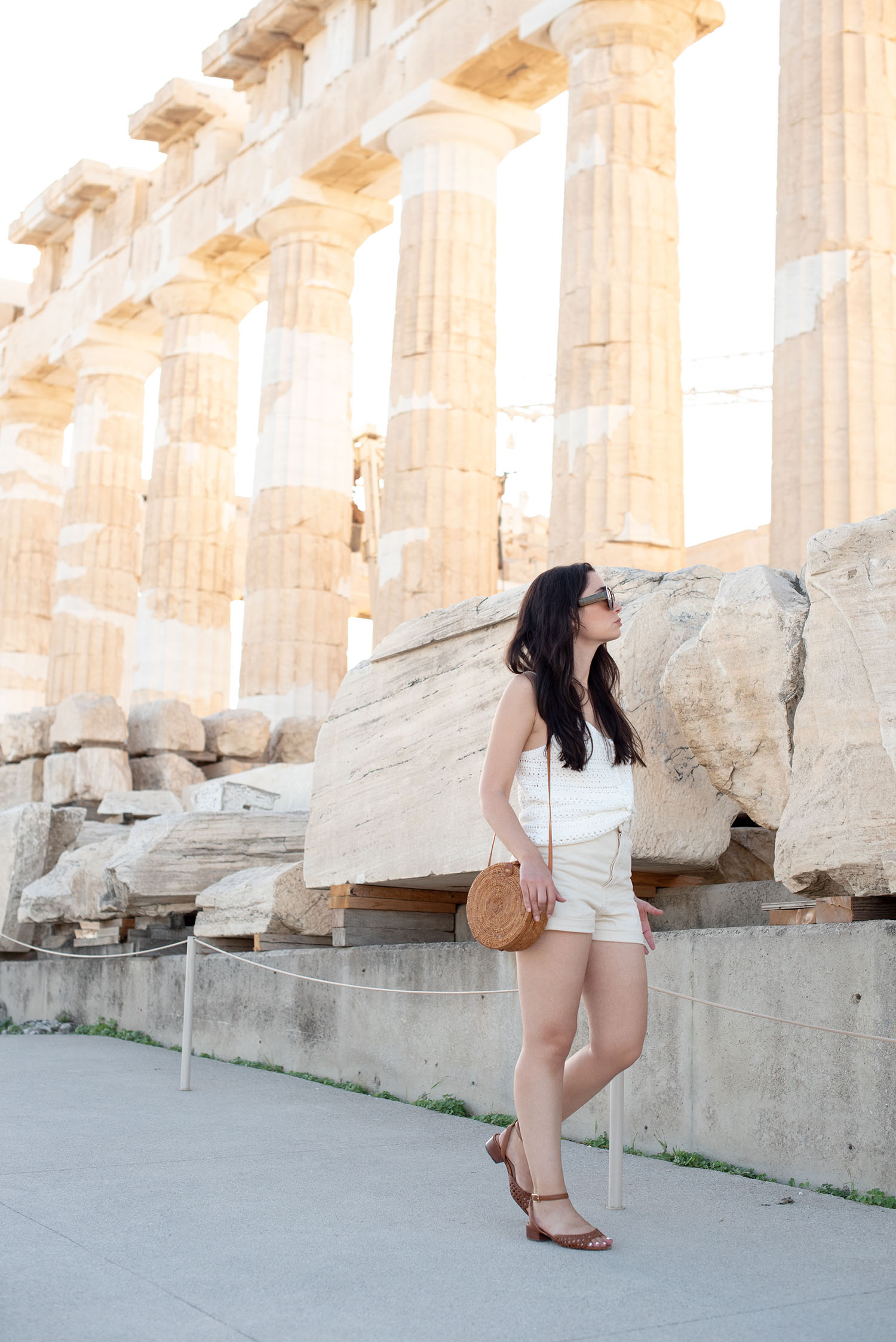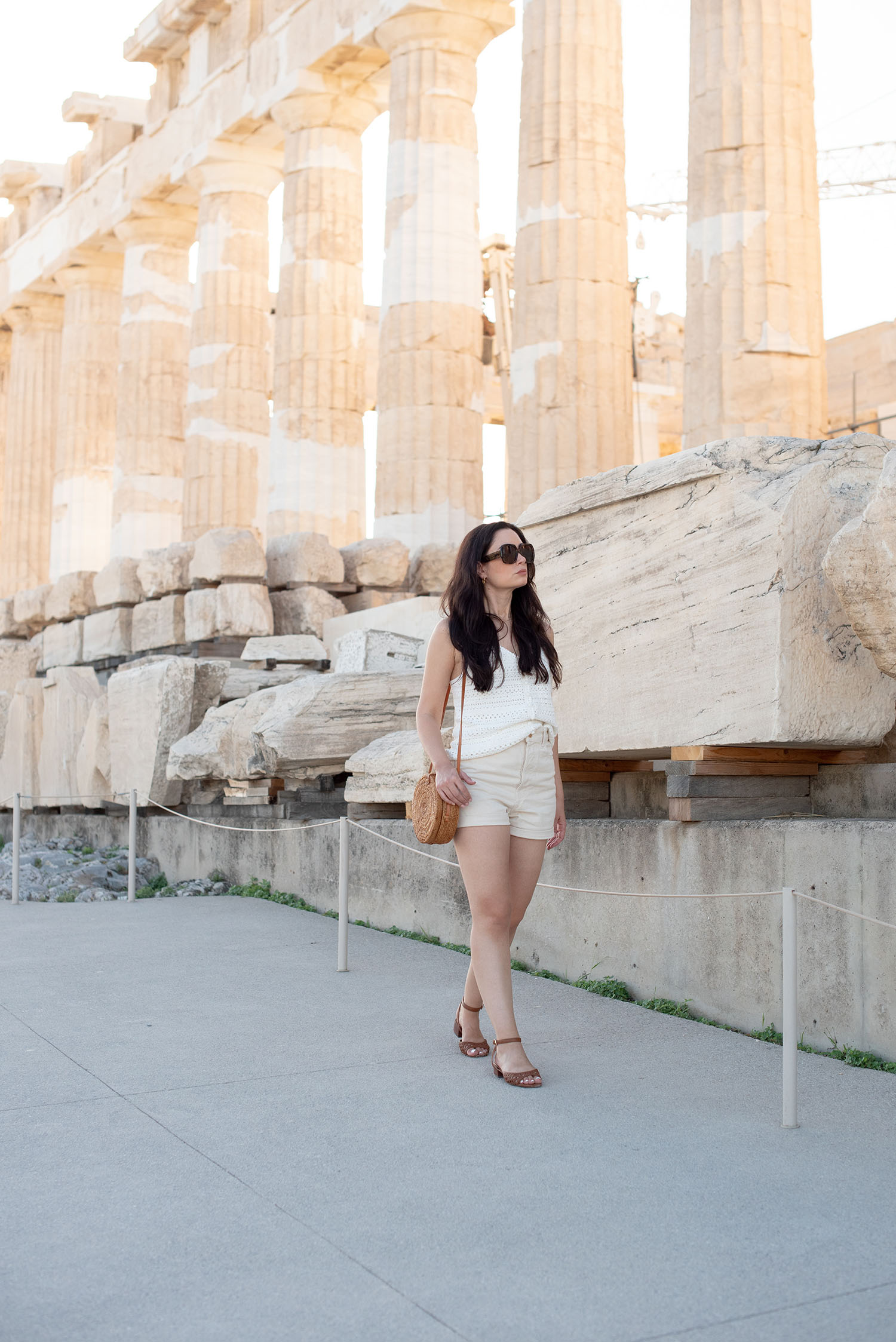

Zara shorts (similar)
J. Crew sandals (similar)
Ellen James handbag
Mango sunglasses
Location: Acropolis Hill – Athens, Greece
There’s nothing quite like climbing to the peak of Acropolis Hill early in the morning. But I will admit, the experience is less appealing in early September. Particularly in thirty-seven degree heat, when you’re accompanied by what feels like every other tourist in Athens, all of them stopping and starting along the path to snap iPhone photos. (What was so special about that specific rock, one wonders when forced to pause yet again, particularly knowing what marvels await at the top of the hill? Why here? Why that picture? We’ll never know.)
The first time we climbed Acropolis Hill, it was mid-March. I can only describe the experience as awe-inspiring. We had the hilltop almost to ourselves. We could take our time exploring in the relatively mild warm weather. But the photos we took have never quite felt like they did the wonder of that morning justice. The caryatids of the Erechtheion appear nowhere in them, just for a start.
The top of Acropolis Hill is an ancient citadel and thus home to so much more than just the famous Parthenon, although that’s what most visitors hope to see. The Parthenon is majestic, there’s no question about it, especially in the early morning sunlight. But the Erechtheion, often overlooked, because it is smaller, and situated away from the centre of the citadel, is the ruin that I find most inspiring. It is known, less commonly, as the Temple of Athena Polias. Athena, the patron goddess of the Athens, and Poseidon, were both worshipped within the temple. It is iconic not just because of its location but because of the six stone women who hold up the Porch of the Maidens: the caryatids.
The caryatids, sculpted female figures who take the place of columns as architectural support in ancient buildings, aren’t unique to the Erechtheion. They originated in the town of Karyai in the Peleponnese, at a temple dedicated to Artemis. But to me, they are most striking on Acropolis Hill by simple virtue of their incredible size. In this place, they are immense – not just giants, but titans, who could cross the hilltop in a matter of steps if they came to life and climbed down from their perch. When you see them, they give you a clear sense of just how powerful the gods and goddesses must have seemed to ordinary ancient Greek people when they arrived at the top of the hill for the first time.
And yet, next to the columns of the Parthenon, the caryatids are relatively small, delicate creatures, albeit imbued with immense strength – after all, they’re just six women and they’ve been holding up half a temple for centuries. With that said, though, it’s worth noting that maidens who stand on Acropolis Hill today are replicas. The original six, surely exhausted by now, were relieved of duty years ago. Five of them live in the nearby Acropolis Museum, while one lone sister is thousands of miles away in the British Museum. (Part of me wonders if she might not be lonely. But then I think that after centuries of familial togetherness, a little loneliness might be a relief.)
I don’t have to tell you not to miss a visit to Acropolis Hill if you’re ever in Athens. If our visit this year was any indication, it’s the one site that every visitor makes time for, no matter how short their trip. But what I will say is that while you’re there, make sure to really look around. There’s so much more on the hilltop than just the Parthenon. Even the caryatids and the Erechtheion are just one more part of the whole.